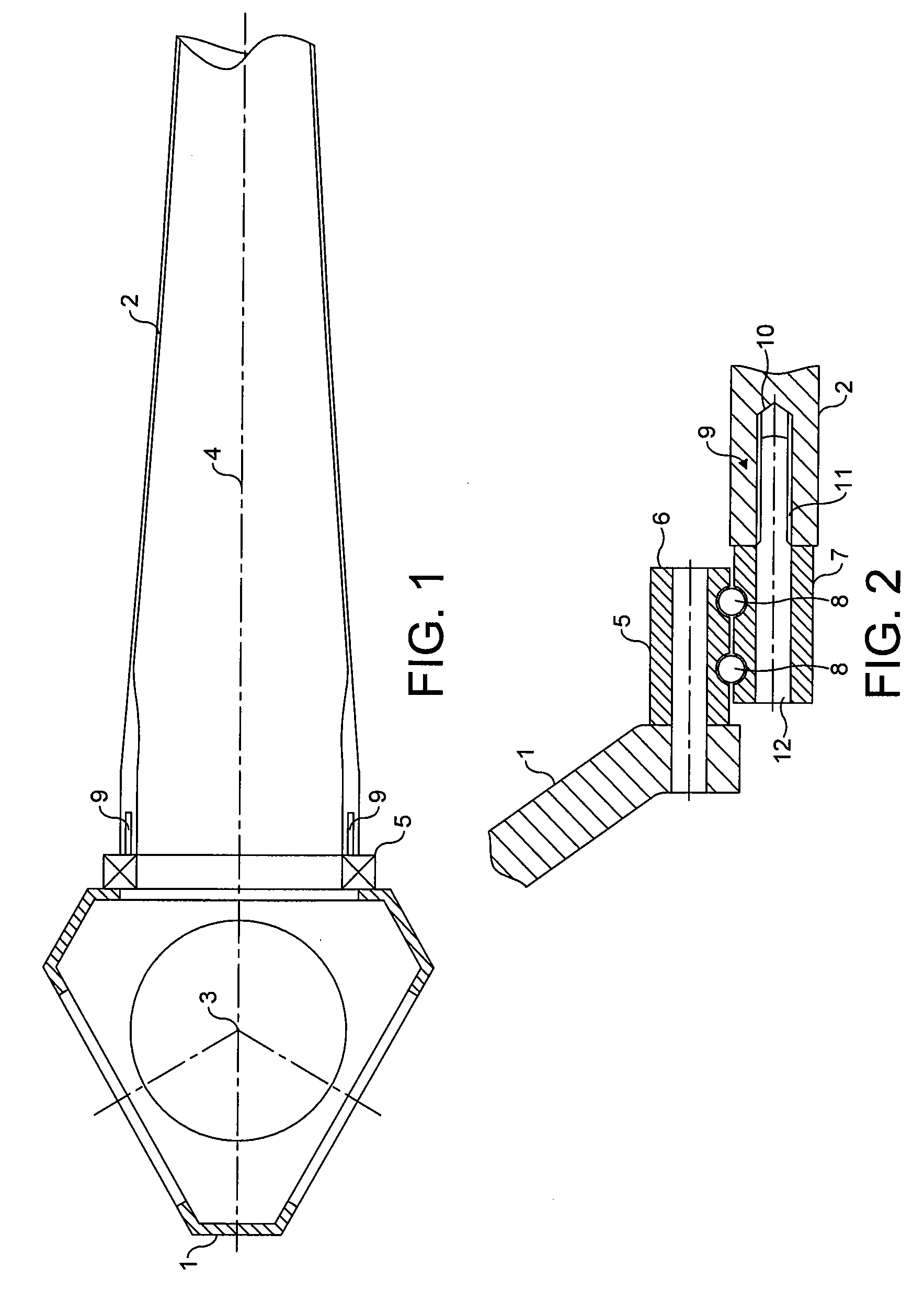Wind turbine rotor
a technology for wind turbines and rotors, which is applied in the direction of wind energy generation, renewable energy generation, machines/engines, etc., can solve the problems of unsuitable modern day large wind turbine blades, joint weight too heavy to be scaled up to the size required for modern day turbines, etc., and achieves the effect of simple fixing and simple lifting of individual blades
- Summary
- Abstract
- Description
- Claims
- Application Information
AI Technical Summary
Benefits of technology
Problems solved by technology
Method used
Image
Examples
Embodiment Construction
[0045]Throughout this specification, the term distal refers to a part towards the radially outermost edge of the rotor (i.e., towards the tips of the blade), while the term proximal refers to the radially innermost part of the rotor (i.e., towards the centre of the hub).
[0046]The various forces acting on the blade are shown in FIG. 3 which is described in the introduction and will therefore not repeated here.
[0047]The rotor comprises a hub 20 to which three blades 21 (only one of which is shown in FIG. 4) are attached. The blade is shown is attached in a first port 22 and it will be readily understood that the two remaining blades are attached in identical fashion at remaining ports 23, 24.
[0048]The rotor is rotatable about the main axis 25. Each of the blades is rotatable about a pitch axis 26 by a respective pitch motor (not shown) in order to optimise the angle of the blade for the prevailing wind conditions.
[0049]Each blade comprises an outer shell 27 which extends to the tip of...
PUM
| Property | Measurement | Unit |
|---|---|---|
| diameter | aaaaa | aaaaa |
| diameter | aaaaa | aaaaa |
| length | aaaaa | aaaaa |
Abstract
Description
Claims
Application Information
 Login to View More
Login to View More - R&D
- Intellectual Property
- Life Sciences
- Materials
- Tech Scout
- Unparalleled Data Quality
- Higher Quality Content
- 60% Fewer Hallucinations
Browse by: Latest US Patents, China's latest patents, Technical Efficacy Thesaurus, Application Domain, Technology Topic, Popular Technical Reports.
© 2025 PatSnap. All rights reserved.Legal|Privacy policy|Modern Slavery Act Transparency Statement|Sitemap|About US| Contact US: help@patsnap.com



